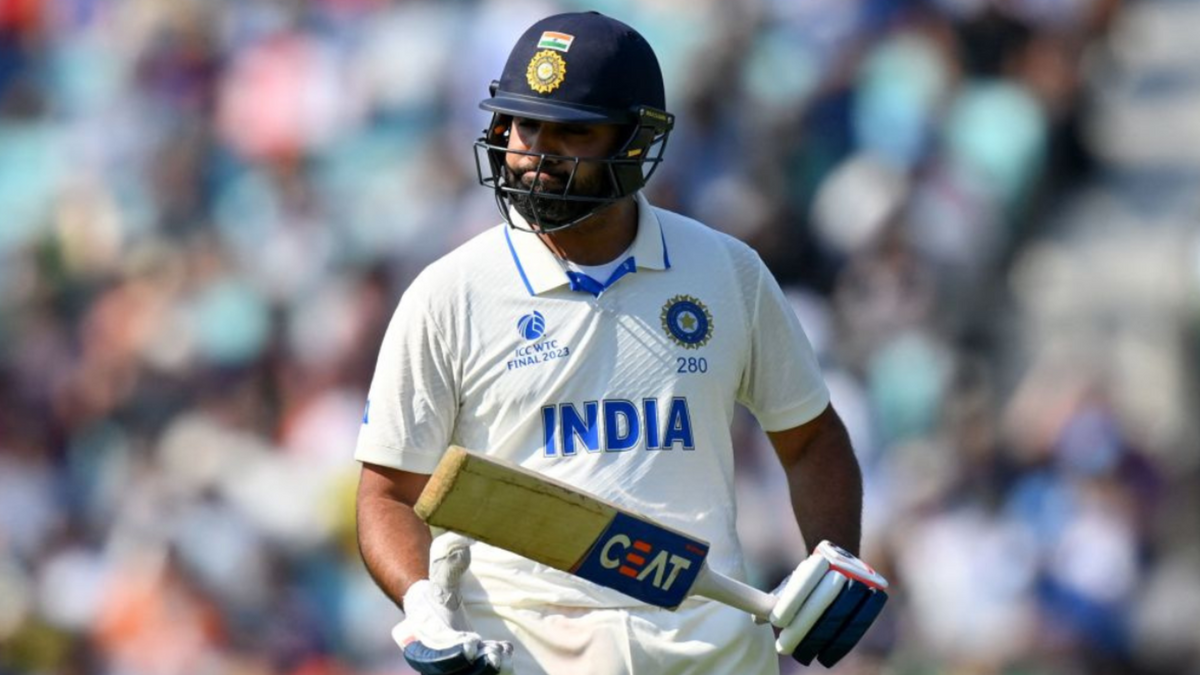
India suffered their second successive defeat in a World Test Championship final today, June 11, two years after succumbing to New Zealand in the final of the inaugural edition, in 2021. Naman Agarwal looks at what India need to do to improve their chances for the next WTC cycle.
To bet on the World Test Championship final with our Match Centre partners bet365, head here.

After having built a world-class Test team that had finally learnt the art of consistently winning Test matches around the globe, India had the opportunity to seal their legacy as one of the greatest Test teams in the history of the sport. Yet, they faltered, not once, but twice.
What has stopped India from crossing the final hurdle and getting their hands on the elusive World Test Championship mace, and where do they need to improve to break the jinx?
Start the transition early in the next cycle
The Indian team that played the WTC final against Australia had eight players above the age of thirty, of which six were above thirty-four. Seven of them featured in the XI of the 2021 WTC final against New Zealand, and the count could have been nine had Rishabh Pant and Jasprit Bumrah not been injured.
By the time the next WTC final comes along, most of this already ageing team will be past 35. While age in itself need not be a deciding factor, the effects of age have started to become visible among this batch of players, especially among the batters, most of whom have endured extended periods of sub-par performances.
At this point, the BCCI need to take a call, with the next final in mind. If they feel the transition towards younger players methodically is imperative with an aim to have a settled core of players including a good mix of youth and experience by 2025, the initiative needs to begin at the earliest.
Prepare and keep bench strength ready in case of injuries
India had opportunities to try out young, consistent domestic performers over the course of the 2021-2023 WTC cycle. However, every time a first-choice player was unavailable, the selectors went back to previously discarded, experienced players.
Three first-choice players – Pant, Bumrah, and Shreyas Iyer – were unavailable for the final due to injuries. They were replaced by KS Bharat, Umesh Yadav, and Ajinkya Rahane. Last year in the middle of the cycle, Cheteshwar Pujara had been recalled – to be fair, as an emergency opener – after Hanuma Vihari failed to get going.
While the experienced professionals have performed well here and there, the selectors and the management have to back the next generation, at least in order to keep them ready in case backups are required. If cricketers perform in domestic cricket, they need to be drafted in, especially in home series, even if that means the seniors have to be rotated.
That way, ahead of key series, they will not have to choose a discarded cricketer for his experience ahead of an uncapped youngster.
Manage workload of all-format players better
Before IPL 2023 started, Indian captain Rohit Sharma had mentioned that the cricketers in and around the national set-up will have their workloads managed, and might even be rested for a few games. He had added that the franchises had been given indications accordingly.
That did not happen. Barring injuries, none of the 11 cricketers who played in the final was rested during the IPL.
Despite the two-month IPL window, India has been the busiest international side over the last few years. Much of the injuries the Indian players have suffered over the last few years can be attributed to workload.
This is where the Indian management has to chalk out specific plans for every player in order to keep them fresh and available for as many important games as possible and get the best out of them.
Develop fast bowlers with different skill sets for different conditions
India’s two defeats in the WTC finals were against teams that had superior fast bowling attacks for the conditions. India struggled to take 20 wickets in the last few overseas Test matches of the 2021-2023 WTC cycle. A factor behind that was the lack of relevant skills for the conditions.
South Africa demands hit-the-deck fast bowlers: India did not have any since Bumrah. Since Bhuvneshwar Kumar and, to an extent Ishant Sharma, India have failed to identify a genuine swing bowler who can move it both ways.
Mohammed Shami is a master at what he does, but is neither a classical hit-the-deck bowler nor a conventional swing bowler, which is perhaps one of the reasons why he has looked good in overseas Test matches but has not had the numbers India would have liked.
It is of utmost importance that the Indian management identifies these skillsets and develops fast bowlers who they think have the potential of fulfilling these roles.
Give enough time to acclimatise to conditions and prepare for games, including WTC Finals
“The schedules were very tight. We hardly got a few weeks preparation after the IPL, plus there weren’t any tour games,” said head coach Rahul Dravid after the final.
There is some truth in this. The WTC final started around a week after the IPL final. Adapting from the slam-bang format in India to Test cricket in England requires more time than that, especially in a one-off game with no chance of a comeback.
The BCCI needs to set its priorities clear and possibly start the IPL a week or more earlier, or allow the Test regulars to skip the later stages of the tournament and head over to wherever the WTC final is going to be played (if India reaches the final, that is).








